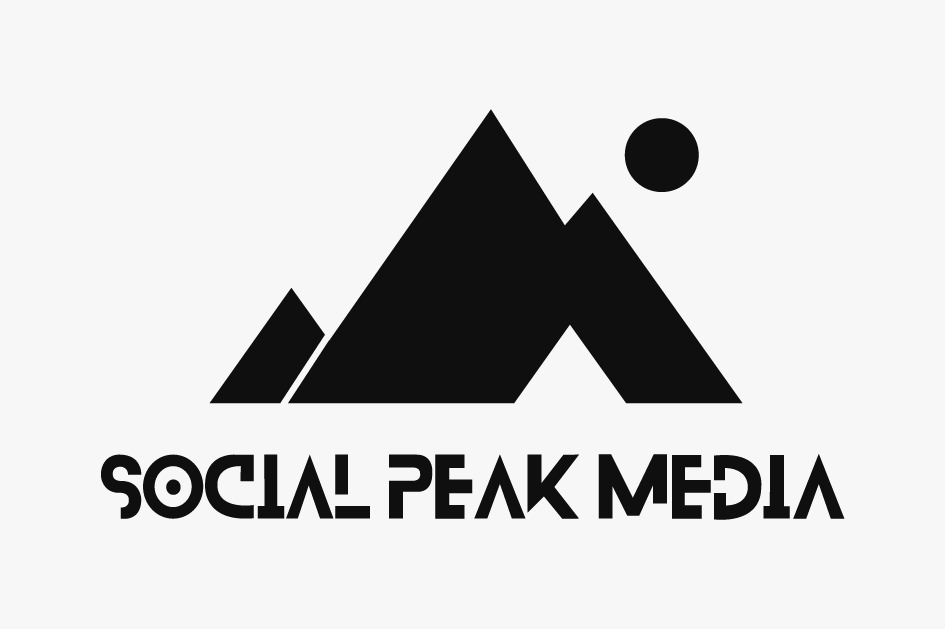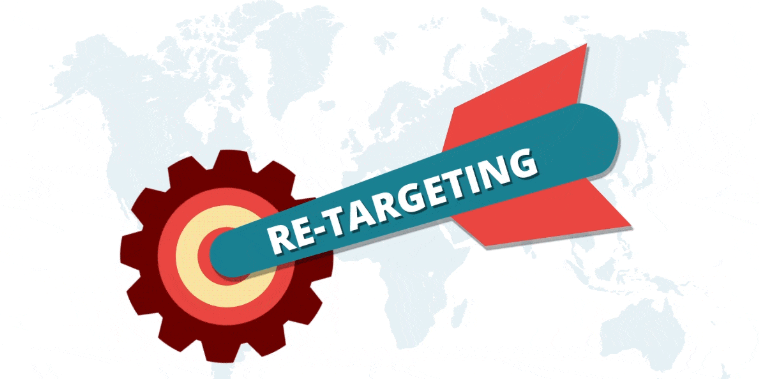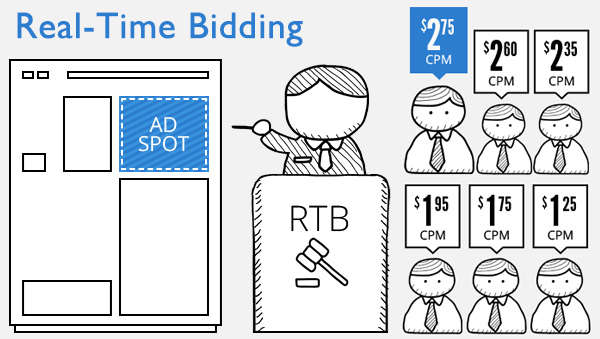The Ultimate Guide to Branding: Build, Grow, and Position Your Brand in a Noisy World (2025 Edition)
Branding is more than just a logo or a catchy tagline. It’s the holistic perception that customers, employees, and the broader public have of your company. In today’s digital, hyperconnected world, brands are built (and destroyed) at lightning speed. A bold visual identity, a clear voice, and consistent experiences across every touchpoint determine whether your business stands out or gets lost in the noise.
In 2025, as social media dominates how audiences engage with brands, it’s more crucial than ever to craft a thoughtful brand strategy. According to a Sprout Social guide, digital brand strategies have taken center stage as consumers shift from in-person experiences to online channels. This means your brand’s digital presence, especially on social media, often serves as your storefront, your customer service desk, and your community hub all in one.

In this guide to branding for 2025, we’ll delve deep into what branding entails, how to develop a robust brand strategy, how to differentiate yourself, and how to ensure your brand resonates with audiences in 2025 and beyond. We’ll draw on proven frameworks, data-driven insights, and the latest trends to help you build, grow, and position your brand effectively.
Branding Fundamentals – Understanding the Core Elements
What Is Branding?
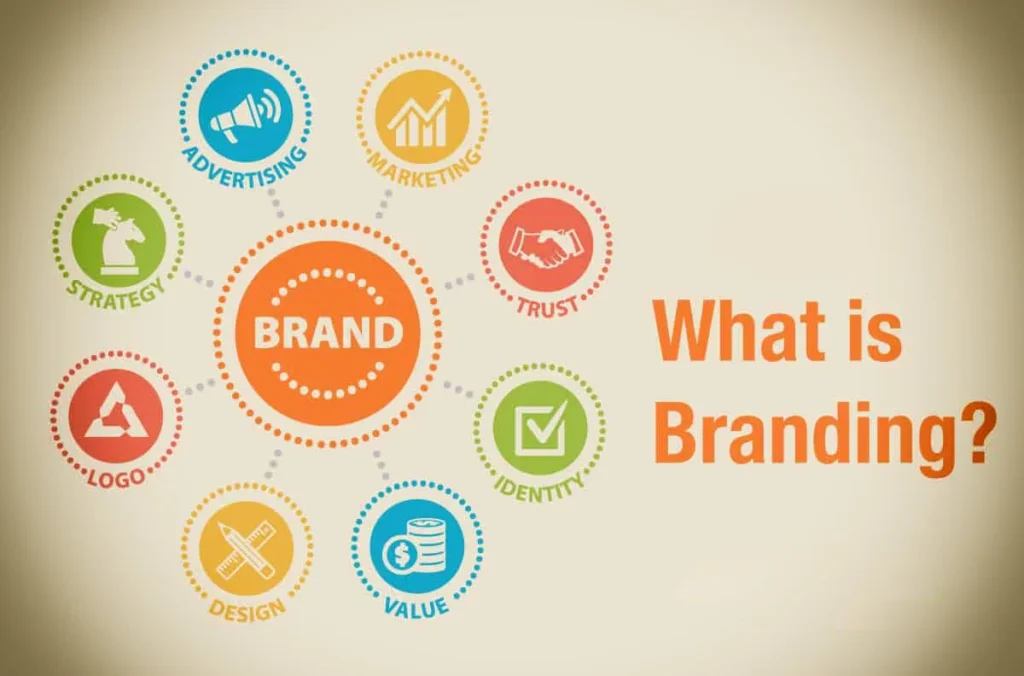
At its simplest, branding is the art and science of shaping perceptions. A brand conveys what your company does, what it stands for, and why it exists. It encompasses tangible elements—like your logo, colors, typography—as well as intangible ones—like your reputation, tone, and customer service ethos.
Sprout Social defines a brand strategy as a blueprint that outlines how brand elements work together to drive positive brand perception across channels. These elements include your brand purpose and values, voice and tone, visual content, and storytelling. A strong brand strategy integrates these components to create a cohesive identity that resonates with audiences and builds trust.
Why Branding Matters in 2025
Digital transformation and pandemic-driven changes have shifted many consumer interactions online. With fewer in-person touchpoints, your brand’s digital presence carries even more weight. Sprout Social highlights that audiences now primarily experience brands through social media.
Every post you make is a chance to reinforce your brand’s identity, values, and personality. A documented brand strategy ensures that these interactions align with your broader business goals and create lasting relationships. In a noisy marketplace, consistent branding helps consumers remember and choose you over competitors.
The Building Blocks of Branding

Advertising Week
Brand Purpose and Values
Your brand purpose is the “why” behind your existence. It answers the question: What problem are you solving, and why does it matter? For example, Patagonia’s purpose is to inspire and implement solutions to the environmental crisis. Values are the guiding principles that shape your culture and decision-making. They influence how you treat customers, how you craft your messaging, and how you respond during crises. When your purpose and values are clear and authentic, they attract like-minded customers and employees.
Brand Personality and Voice
Brand personality describes the human characteristics associated with your brand. Are you playful or serious? Formal or conversational? Your voice and tone translate this personality into language. For instance, a tech startup might choose a friendly, innovative voice, while a financial institution might opt for a reassuring and authoritative tone. Sprout Social notes that your brand persona—the voice, tone, and personality—plays a critical role in strategic brand management. A consistent voice ensures your brand feels familiar across platforms, from social posts to customer support emails.
Visual Identity
Your visual identity encompasses your logo, color palette, typography, imagery, and design elements. A strong visual identity creates recognition and triggers emotional responses. In 2025, modern design trends influence branding choices. Bold, expressive typography and oversized fonts are popular. Dark mode options reduce eye strain and create modern aesthetics. Organic shapes and soft UI (neumorphism) add depth and tactile realism. Gradients and vibrant color transitions draw attention to key content. Use these design trends thoughtfully to convey your brand’s personality.
Brand Storytelling
People remember stories, not bullet points. Brand storytelling uses narrative techniques to convey who you are, what you do, and why it matters. It connects your mission and values to real-world experiences, forging emotional connections with your audience. Storytelling can involve your founding story, customer success stories, behind-the-scenes glimpses, or product development narratives. The best stories evoke emotion, demonstrate transformation, and invite the audience to be part of the journey.
Developing a Comprehensive Brand Strategy
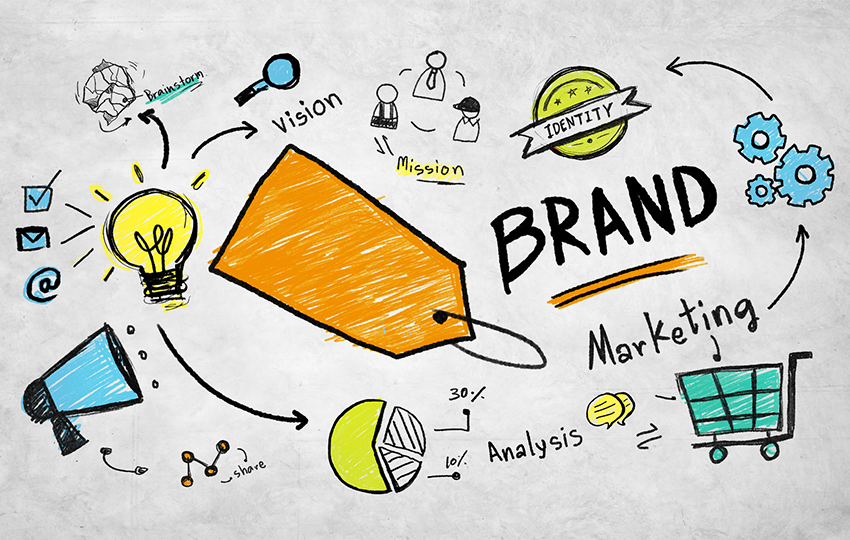
A brand strategy provides a roadmap for building and maintaining brand equity. It ensures consistency across channels and guides decision-making. Sprout Social’s framework outlines six steps for developing a brand strategy. We’ll expand on these steps and integrate additional insights.
Step 1: Assemble Your Branding Team
A brand is larger than any single person. It requires collaboration across departments, from marketing and design to HR and leadership. According to the Sprout Social framework, you need two groups: a “tiger team” for project management and deliverables, and discovery groups that include senior leaders, culture advocates, designers, and new hires. Diverse perspectives ensure a holistic understanding of your brand and how it’s perceived across the organization. Start by identifying internal brand champions who can contribute insights and provide feedback. This step sets the stage for an inclusive brand-building process.
Step 2: Conduct Discovery Sessions
Gather your discovery groups for structured discussions. The goal is to identify what your brand does well, what competitors are doing better, and what differentiates your business. Ask open-ended questions to uncover perceptions and feelings: How would you describe our brand personality? What emotions do you associate with our brand? These sessions can spark new ideas and reveal misalignments between how you see yourself and how others see you. Use tools like whiteboards or collaborative software to capture themes and insights. Encourage participants to challenge each other’s assumptions and build on ideas.
Step 3: Document Your Findings and Build the Framework
After discovery, document your raw data and refine it into a brand strategy framework. According to Sprout Social, focus on four key areas: brand stance (purpose, personality, value propositions), values, messaging guidelines (tagline, messaging pillars), and visual guidelines. Don’t aim for perfection right away; this framework is a living document that evolves with your brand. Identify your brand’s mission statement and vision, define your audience, articulate your unique value proposition, and outline brand messaging pillars. Use this document as a reference for everything from marketing campaigns to hiring decisions.
Step 4: Create a Crisis Plan
Crises are inevitable. Whether it’s a product recall, social media backlash, or global event, brands must respond swiftly and thoughtfully. Sprout Social suggests adding a crisis plan to your brand strategy to ensure you’re prepared. Establish a crisis communications team with designated roles—team leader, coordinator, legal counsel, and final approver. Identify potential risk scenarios and define your response protocols. During a crisis, communicate transparently, acknowledge mistakes, and outline the steps you’re taking to rectify the situation. A well-executed crisis plan can transform challenges into brand-building opportunities, reinforcing trust and authenticity.
Step 5: Circulate and Refine Your Strategy
Once you have a draft, share it with stakeholders for feedback. Ask: Is anything missing or unclear? Does the format make sense? Can we simplify anything? Incorporate suggestions and refine the document. Collaboration ensures that the strategy is understood and embraced by the people who will execute it. Use review cycles to reinforce ownership and accountability across departments.
Step 6: Monitor and Iterate
Branding is not a one-and-done exercise. It requires continuous monitoring and refinement. Sprout Social recommends quarterly brand roundtables to evaluate progress. Use social listening tools to track sentiment and share of voice . Collect quantitative metrics like brand awareness, engagement, net promoter score (NPS), and customer lifetime value. Qualitatively, gather feedback through surveys, interviews, and user-generated content. Adjust your strategy based on data and insights—what resonates with your audience, what doesn’t, and what trends are emerging.
Positioning and Differentiation – Standing Out in a Saturated Market

Conducting Competitor Analysis
To position your brand effectively, you must understand your competitive landscape. Identify direct competitors and analyze their branding—visual identity, voice, messaging, values, and positioning. Ask: How do they define their purpose? What emotions do they evoke? Where are their strengths and weaknesses? Use this analysis to identify gaps and opportunities. For example, if all competitors emphasize technical features, you might differentiate by highlighting customer service or community. Remember that differentiation isn’t about being radically different; it’s about owning a specific space in your customers’ minds.
Identifying Your Unique Value Proposition (UVP)
Your UVP articulates why someone should choose your brand over others. It should be clear, concise, and centered on the benefits you provide. To craft your UVP, consider the intersection of what your customers need, what you excel at, and what your competitors neglect. For instance, if you’re a sustainable clothing brand, your UVP could emphasize ethically sourced materials, transparency in production, and long-lasting designs. Use the discovery session insights to pinpoint what customers truly value about your brand.
Choosing a Brand Positioning Strategy
There are several positioning strategies you can adopt:
• Price-Based Positioning: Compete on price by offering similar value at a lower cost.
• Quality or Luxury Positioning: Emphasize superior quality, craftsmanship, and exclusivity.
• Benefit-Based Positioning: Highlight a specific benefit, like convenience, speed, or sustainability.
• Niche Positioning: Focus on a specific audience segment with unique needs.
• Lifestyle Positioning: Align your brand with a particular lifestyle, culture, or set of values.
Choose the strategy that aligns with your purpose, values, and UVP. Use your brand messaging pillars to reinforce this positioning across all channels.
Aligning Positioning With Identity
Positioning must be consistent with your brand personality and values. If you position yourself as premium but your visuals look cheap or inconsistent, you’ll create cognitive dissonance. Similarly, if your brand voice is playful but your messaging centers on luxury and exclusivity, you’ll confuse audiences. Align your positioning with your visual identity (colors, typography, design trends) and verbal identity (voice, tone, storytelling). Consistency creates trust and recognition.
Crafting a Compelling Brand Identity
Designing Your Logo and Visual Elements
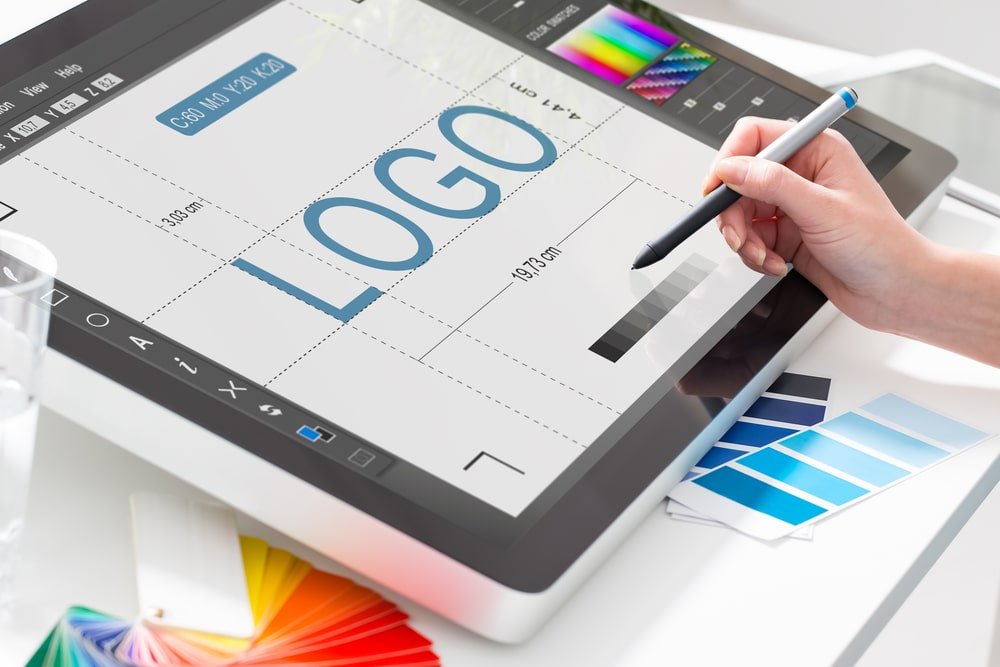
Amped
Your logo is the most recognizable symbol of your brand. Invest in professional design to ensure it’s distinctive, versatile, and timeless. Use color psychology to evoke specific emotions—blue for trust, green for sustainability, red for passion, etc. In 2025, bold typography, expressive fonts, and organic shapes are trending. Consider how your logo and other visual elements will translate across media: websites, social media, print, product packaging, signage, and merchandise. Create variations (e.g., icon-only, stacked, horizontal) for flexibility.
Establishing a Color Palette and Typography System
A cohesive color palette reinforces brand recognition. Choose primary, secondary, and accent colors that reflect your brand personality. Ensure sufficient contrast for accessibility. Pair fonts strategically—use one or two complementary typefaces for headings and body text. Modern design trends encourage variable fonts for performance and flexibility. Avoid using too many fonts; consistency is key.
Creating Brand Guidelines
Brand guidelines document your visual and verbal standards. They ensure consistency across designers, marketers, partners, and platforms. Include usage rules for logos, colors, typography, imagery, and iconography. Provide examples of proper and improper logo usage. Outline guidelines for photography style, illustration style, and video production.
In addition to visual standards, document voice and tone guidelines with examples. Describe how to adapt your tone for different contexts (e.g., social media vs. investor communications). Include messaging pillars, taglines, and key phrases that should be used consistently.
Integrating Modern Design Trends
Incorporate current design trends thoughtfully to keep your brand fresh:
• Dark Mode: Offer light and dark versions of your site and app to cater to user preferences.
• 3D and Immersive Elements: Use subtle 3D illustrations or animations to add depth.
• Organic Shapes and Soft UI: Introduce fluid shapes and gentle shadows for a tactile feel.
• Gradients and Vibrant Palettes: Apply gradient backgrounds or accents to draw attention.
• Micro-Interactions and Animations: Create delightful feedback for user actions. Use micro animations to guide users through interactions and highlight key actions.
Use these trends sparingly and ensure they align with your brand personality and positioning. Avoid clutter and maintain clear usability.
Establishing Your Brand Voice and Story
Defining Voice, Tone, and Language
Your brand voice is a reflection of your personality. It should be distinct, consistent, and recognizable. Define whether your tone is formal or casual, playful or professional, witty or straightforward. Consider linguistic nuances—use of contractions, colloquialisms, humor—and adapt them to your audience. Document these guidelines so all content creators can maintain consistency.
Crafting Your Brand Story
A compelling brand story follows a narrative arc: origin, challenge, transformation, and future vision. Start with why your brand was created—what gap or problem you set out to solve. Share pivotal moments that shaped your mission and values. Include customers’ stories that illustrate your impact. Humanize your brand by highlighting the people behind it—the founders, team members, and community. A transparent, authentic story builds emotional connections and fosters loyalty.
Creating a Messaging Framework
Develop messaging pillars—key themes or topics that your brand consistently addresses. For example, a sustainable fashion brand might have pillars around ethical sourcing, longevity of garments, and circular economy. Each pillar should connect back to your purpose and values. Create sample taglines, elevator pitches, and value propositions to guide copywriters and sales teams. Tailor the messaging to different stages of the customer journey, from awareness to consideration to purchase.
Storytelling Across Channels
Adapt your brand story for various platforms:
• Website: Use the “About Us” page to tell your origin story, highlight milestones, and share testimonials.
• Social Media: Share behind-the-scenes stories, user-generated content, and interactive polls. Each post is an opportunity to reinforce your brand persona and engage your audience.
• Email Marketing: Craft nurture sequences that share educational content, values-driven messages, and exclusive offers.
• Events and Webinars: Use live formats to share personal stories and interact with attendees.
• Video Content: Story-driven videos convey emotion more effectively. Share product stories, brand documentaries, and customer testimonials.
Consistency is essential: ensure your narrative aligns across channels and evolves over time without losing its core.
Creating Engaging Brand Experiences
Omnichannel Presence
Customers interact with brands through multiple touchpoints—website, social media, email, in-store, mobile apps, chatbots, and more. An omnichannel strategy ensures that these interactions are cohesive. If a customer reads a blog post, sees an Instagram story, and receives an email newsletter, they should all feel like parts of the same brand experience. Map out customer journeys and ensure that messaging and visuals are consistent across each stage.
User Experience and Personalization
User experience (UX) is integral to brand perception. A site that loads quickly, is easy to navigate, and provides relevant content reflects positively on your brand. Personalization enhances UX by tailoring content, recommendations, and communications to each user. Hostinger’s AI trends article notes that AI algorithms process user data in real time to create highly personalized experiences.
This includes dynamic content recommendations, customized layouts, and product suggestions. Personalization extends beyond the website—it applies to email marketing, app notifications, and even in-store experiences. Always prioritize privacy and consent when collecting and using user data.
Interactive Elements and Micro-Interactions
Interactive design elements capture attention and encourage engagement. Use quizzes, calculators, polls, or games to involve users. Fullestop suggests using slides, animations, videos, quizzes, and infographics to make websites more engaging. Micro interactions—small animations that provide feedback—enhance usability and delight. TheeDigital describes micro interactions like color changes on hover and subtle animations triggered by clicks. These interactions can transform mundane tasks into enjoyable experiences and reinforce your brand personality.
Community Building and User-Generated Content
Cultivating a community around your brand fosters loyalty and advocacy. Encourage customers to share their experiences via hashtags, reviews, and user-generated content. Feature their stories on your channels to amplify their voices. Host digital events, forums, or Slack groups where customers can interact with each other and with your team. Strong communities turn customers into brand ambassadors who share and defend your brand organically.
Customer Service as Branding
Every interaction with customer service shapes brand perception. Train your support team to embody your brand voice, values, and mission. Use chatbots for quick, consistent responses, but ensure humans are available for complex queries. Fullestop notes that AI-powered tools like chatbots enhance customer service and user interaction. Provide proactive support through knowledge bases, FAQs, and tutorials. Empower your team to solve problems creatively and empathetically.
Driving Brand Growth – Marketing, Engagement, and Partnerships
Content Marketing
Content marketing is a powerful way to build authority, educate audiences, and nurture leads. Create blog posts, videos, podcasts, eBooks, and infographics that align with your messaging pillars. Use the pillar-and-cluster model to cover topics comprehensively, linking related content to build topical authority.
Optimize content for search engines by using relevant keywords, structured data, and internal links. Distribute content across owned channels (website, email), earned channels (guest posts, interviews), and shared channels (social media). Repurpose content into different formats to reach varied audiences.
Social Media Marketing
Social media is where your brand comes to life. Choose platforms based on your audience demographics and business objectives. On Instagram and TikTok, prioritize visually appealing content and short-form videos. On LinkedIn, share thought leadership articles, industry news, and company culture. The Sprout Social guide emphasizes that every post is a chance to reinforce your brand. Use social listening tools to monitor conversations, identify trends, and engage with followers. Tailor your content for each platform, but maintain a consistent voice and visuals.
Influencer Collaborations
Partnering with influencers expands your reach and adds social proof. Choose influencers whose values align with yours and whose audience matches your target market. Collaborations can include product reviews, sponsored content, or co-created products. Clearly outline expectations, deliverables, and guidelines to maintain brand consistency. Measure the impact of influencer campaigns through metrics like engagement, referral traffic, and sales.
Paid Advertising
Paid advertising amplifies your brand message. Platforms like Google Ads, Meta Ads, LinkedIn Ads, and TikTok Ads allow precise targeting by demographics, interests, and behaviors. Use retargeting to re-engage visitors who have interacted with your site or content. A/B test different creatives and messaging to identify what resonates best. Maintain visual and tonal consistency with your organic content to strengthen brand recognition.
Partnerships and Co-Branding
Strategic partnerships allow you to tap into new markets and share resources. Co-branding campaigns can combine the strengths of two brands to create a unique offering—think Nike x Apple or Spotify x Starbucks. Ensure that your partner’s values align with yours and that the partnership offers mutual benefit. Co-branded campaigns should be clearly communicated to avoid confusing audiences.
Events and Experiential Marketing
Events create immersive brand experiences. Host webinars, workshops, conferences, or in-person pop-ups that reflect your brand identity. For example, if you’re a wellness brand, you might host a virtual yoga retreat. Experiential marketing fosters emotional connections and allows customers to interact with your brand in real life or through virtual reality. Use these events to build community and gather feedback.
Measuring and Managing Your Brand
Brand Awareness and Reach
Awareness measures how many people recognize your brand. Track metrics like search volume, social media reach, website traffic, and share of voice (SOV). SOV compares your brand’s mentions to competitors’. Sprout Social recommends using social listening tools to track perception and sentiment. Surveys and brand recall studies can measure recognition and association. Increasing awareness is a gradual process; focus on consistent messaging and omnichannel presence.
Brand Sentiment and Reputation
Sentiment analysis evaluates how people feel about your brand. Social listening tools categorize mentions as positive, neutral, or negative. Monitor sentiment trends over time and respond to feedback promptly. A strong online reputation is valuable during crises, helping your business withstand tough times. Use public relations strategies to amplify positive stories and address negative coverage transparently.
Customer Loyalty and Advocacy
Loyal customers drive repeat purchases and word-of-mouth marketing. Measure loyalty through metrics like repeat purchase rate, customer lifetime value, and referral rates. NPS surveys ask customers how likely they are to recommend your brand on a scale of 0–10. Promoters (9–10) are your advocates; detractors (0–6) need attention. Reward loyalty with programs like points, exclusive content, or early access to new products. Encourage satisfied customers to leave reviews and testimonials.
Brand Equity and Financial Metrics
Brand equity is the intangible value derived from brand recognition and reputation. Strong brand equity allows you to charge premium prices and weather competitive pressures. Track financial metrics like revenue growth, profit margins, and price elasticity. Compare your performance to industry benchmarks. Evaluate the ROI of branding efforts by analyzing how brand campaigns influence sales, customer acquisition costs, and customer retention.
Market Share and Competitive Position
Market share measures your sales relative to the total market. Growth in market share suggests that your branding and marketing efforts are resonating. Regularly evaluate your position using SWOT analysis (strengths, weaknesses, opportunities, threats). Adjust your strategy to leverage opportunities and mitigate threats. Invest in innovation, product development, or new markets to stay ahead.
Sustaining and Evolving Your Brand
Internal Brand Alignment
Your brand lives not only in marketing materials but also in the hearts and minds of your employees. Internal alignment ensures that everyone understands and embodies the brand. Conduct brand training sessions, share updates about brand guidelines, and celebrate employees who exemplify brand values. Encourage employees to become brand advocates on social media. Internal alignment fosters a strong brand culture that carries through to customer interactions.
Maintaining Consistency Across Touchpoints
Consistency builds trust. Whether a customer is browsing your website, reading a social post, speaking to customer service, or unboxing a product, the experience should feel cohesive. Use your brand guidelines to inform design, messaging, and behavior across teams. Conduct periodic audits to identify inconsistencies. Implement workflows and approval processes to ensure that new materials adhere to guidelines.
Listening and Responding to Feedback
Feedback—positive and negative—is a gift. Use surveys, reviews, focus groups, and social listening to gather customer insights. Encourage customers to share their experiences and suggestions. Address complaints promptly and thank people for compliments. When you implement changes based on feedback, communicate them to your audience to show that you listen and care.
Evolving Your Brand Over Time
Brands must evolve to stay relevant. Market trends, cultural shifts, and new technologies can make your brand look outdated or disconnected. Schedule periodic brand reviews to assess your strategy, identity, and positioning. Determine whether adjustments are needed—such as refreshing your visual identity, updating your messaging, or revisiting your values. Major rebrands should be undertaken thoughtfully and communicated transparently to avoid alienating loyal customers.
Crisis Management and Reputation Repair
Crises test your brand’s resilience. A crisis plan, as outlined in your strategy, helps you respond quickly and appropriately. During a crisis, prioritize transparency, empathy, and accountability. Own up to mistakes, outline corrective actions, and commit to improvement. After the crisis, analyze what went wrong and adjust processes to prevent recurrence. Done well, crisis management can strengthen your brand by demonstrating responsibility and trustworthiness.
Future Trends and Innovations in Branding
Artificial Intelligence and Personalization
AI will continue to revolutionize branding. Personalization engines process vast amounts of data to deliver individualized experiences. In branding, this could mean dynamic logos that adapt to user preferences, personalized landing pages, or AI-generated copy that aligns with brand voice. AI can also automate A/B testing to determine which visuals, messages, and formats perform best . Brands should invest in ethical AI practices, ensuring data privacy and avoiding bias.
Voice-Activated and Conversational Interfaces
Voice interfaces are becoming mainstream with smart speakers and voice assistants. Voice search optimization will influence how brands are discovered and remembered. Brands should optimize their content for voice queries and consider developing voice-activated applications or skills. Conversational AI will make interactions more natural—imagine voice-brand personalities that embody your brand persona.
Extended Reality (AR/VR) and Immersive Branding
Augmented and virtual reality enable immersive brand experiences. Hostinger predicts that VR and AR will integrate into web experiences. Imagine letting customers virtually try on clothes, test furniture in their homes, or explore travel destinations. AR filters on social media allow users to interact with branded effects. These technologies can differentiate your brand and create memorable experiences.
Multi-Sensory Branding
Beyond visual and auditory cues, brands are exploring multi-sensory experiences. Hostinger envisions that future websites may incorporate haptics, scent, or taste to create a full sensory experience. While this may sound futuristic, companies like Starbucks already leverage scent (freshly brewed coffee) to enhance in-store experiences. As technology advances, digital channels may deliver tactile feedback or scent triggers through specialized hardware. Brands should consider how these senses fit their identity and story.
Ethical, Inclusive, and Sustainable Branding
Consumers are increasingly mindful of ethical practices, diversity, and sustainability. Hostinger notes a trend toward privacy- and ethics-centered design. Brands must embrace transparency about their supply chain, labor practices, and environmental impact. Inclusive branding reflects diverse cultures, identities, and abilities. Avoid tokenism by embedding inclusivity into your values and operations. Sustainable branding reduces environmental footprint through eco-friendly materials, carbon neutrality, and responsible packaging. Align your ethics with your storytelling and operations.
Frequently Asked Questions (FAQ)
1. How do I start building a brand from scratch?
Begin by defining your purpose, values, and target audience. Conduct competitor research to identify gaps in the market. Assemble a branding team and hold discovery sessions. Develop your visual identity, messaging framework, and brand guidelines. Test your ideas with potential customers and refine based on feedback.
2. What’s the difference between branding and marketing?
Branding shapes perception and creates the foundation of your company’s identity. Marketing uses tactics like advertising, content creation, and social media to communicate and promote the brand. Branding is strategic and long-term, while marketing is tactical and shorter-term.
3. Why should my brand be on social media?
Social media is where audiences interact with brands. It’s an opportunity to share your story, engage with your community, and gather insights. Consistent, strategic social posts reinforce your brand persona and build relationships.
4. How often should I revisit my brand strategy?
Review your brand strategy annually, but monitor it continuously. Check in quarterly to evaluate metrics and refine tactics. Major industry shifts, market changes, or internal transformations may warrant more frequent revisions.
5. What are the signs that my brand needs a refresh?
Signs include declining engagement, negative sentiment, confusion about what you offer, outdated visuals, or misalignment with new goals. Conduct brand audits and solicit feedback to determine whether a refresh is necessary. If your brand no longer reflects your values or resonates with your audience, it may be time to update it.
6. How can I measure brand success?
Measure brand success through awareness metrics (reach, SOV), sentiment analysis, loyalty metrics (repeat purchases, NPS), financial metrics (revenue, margins, brand equity), and competitive positioning. Use social listening tools, surveys, analytics platforms, and financial reports.
7. Is personal branding important for entrepreneurs?
Yes. A personal brand can enhance credibility, build trust, and open opportunities. Entrepreneurs should align their personal values with their business brand. Share personal stories, expertise, and insights while maintaining professionalism and consistency.
8. How do I manage a brand crisis?
Prepare a crisis plan within your brand strategy. When a crisis hits, respond quickly, acknowledge the issue, and communicate steps you’re taking. Be transparent and empathetic. After resolving the crisis, analyze what went wrong and adjust your processes.
9. How important is employee advocacy?
Employees are your most authentic ambassadors. Encourage them to share content, leave reviews, and engage with customers. Provide brand training and guidelines so they know how to represent your brand. Reward advocacy and celebrate employees who live your values.
10. What will branding look like in the future?
Branding will become even more personalized, immersive, multi-sensory, and ethical. AI will tailor experiences, voice and AR/VR will introduce new interaction modes, and sustainability will be non-negotiable. Brands that embrace transparency, inclusivity, and innovation will thrive.
Conclusion – Building a Resilient Brand in a Noisy World
In 2025’s crowded marketplace, branding is both an art and a science. It blends strategy, creativity, psychology, and technology to create memorable experiences that foster trust and loyalty. Start with a clear purpose and values, then craft a comprehensive strategy that touches every aspect of your business—from visual identity to voice, from internal culture to customer interactions.
Use data, feedback, and innovation to refine your brand and keep it relevant. Remember that a brand is a living entity; it grows and evolves with its audience, the market, and society. By committing to authenticity, consistency, and continuous improvement, you can build a resilient brand that stands out in a noisy world and remains a beacon for your customers for years to come.
